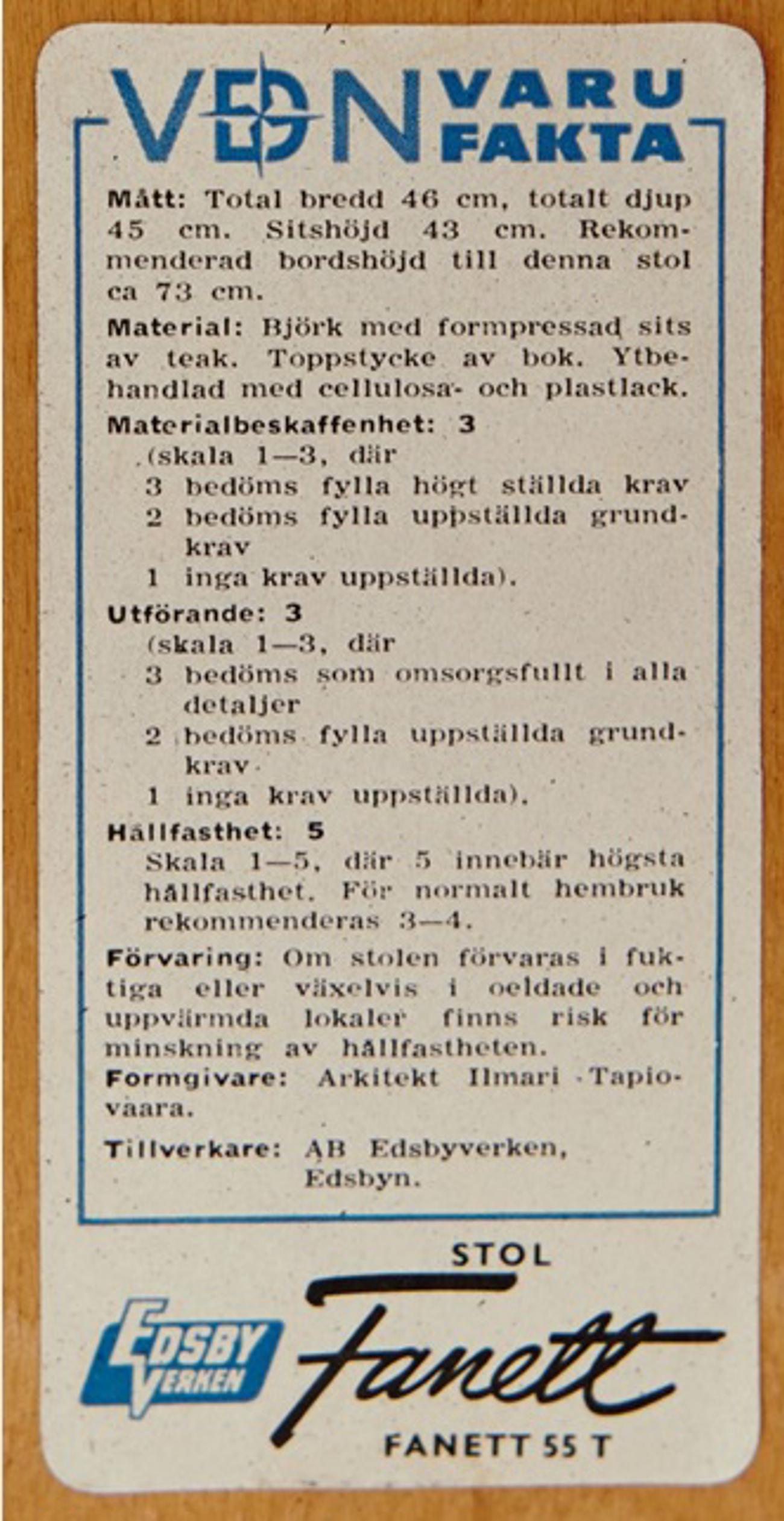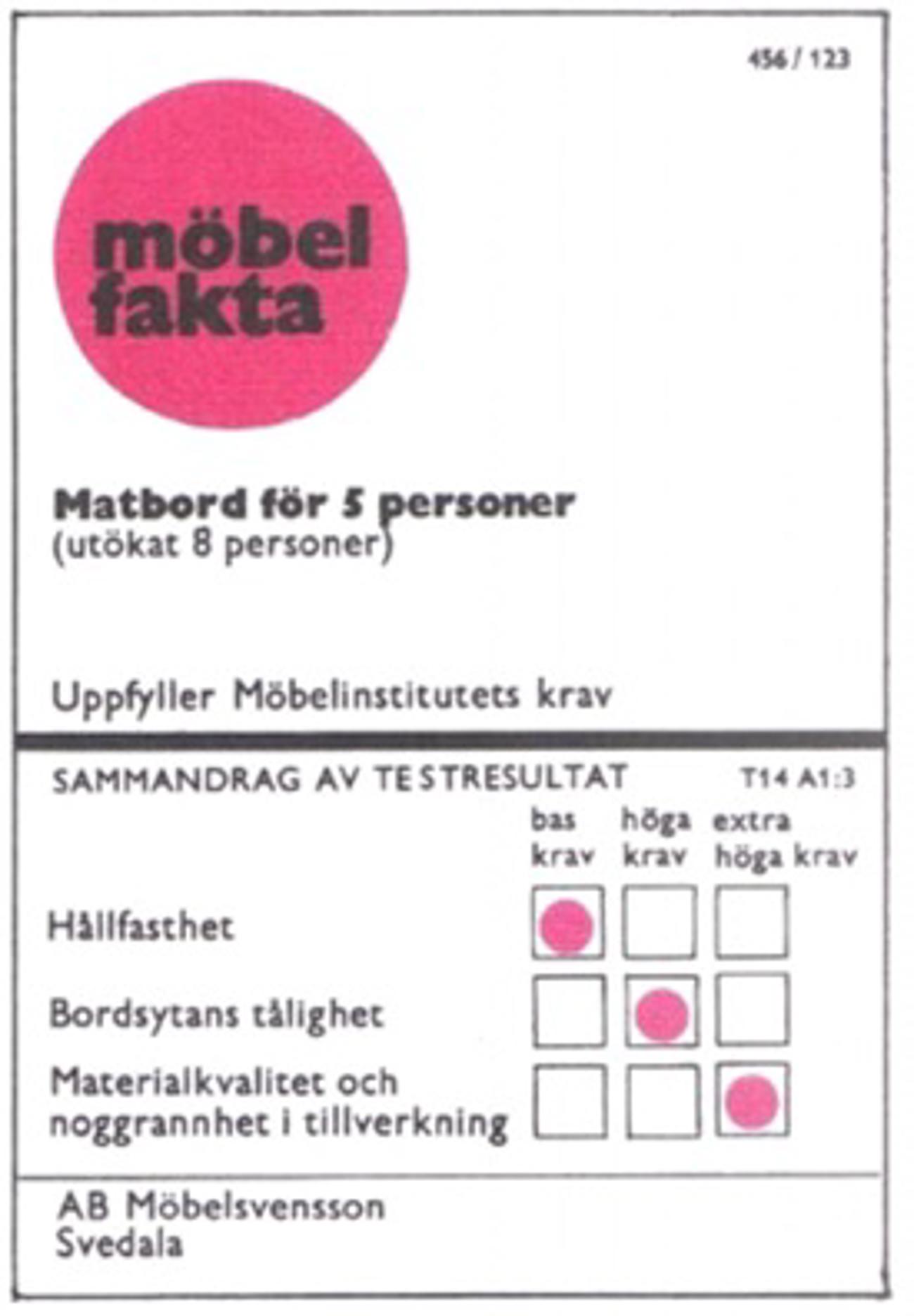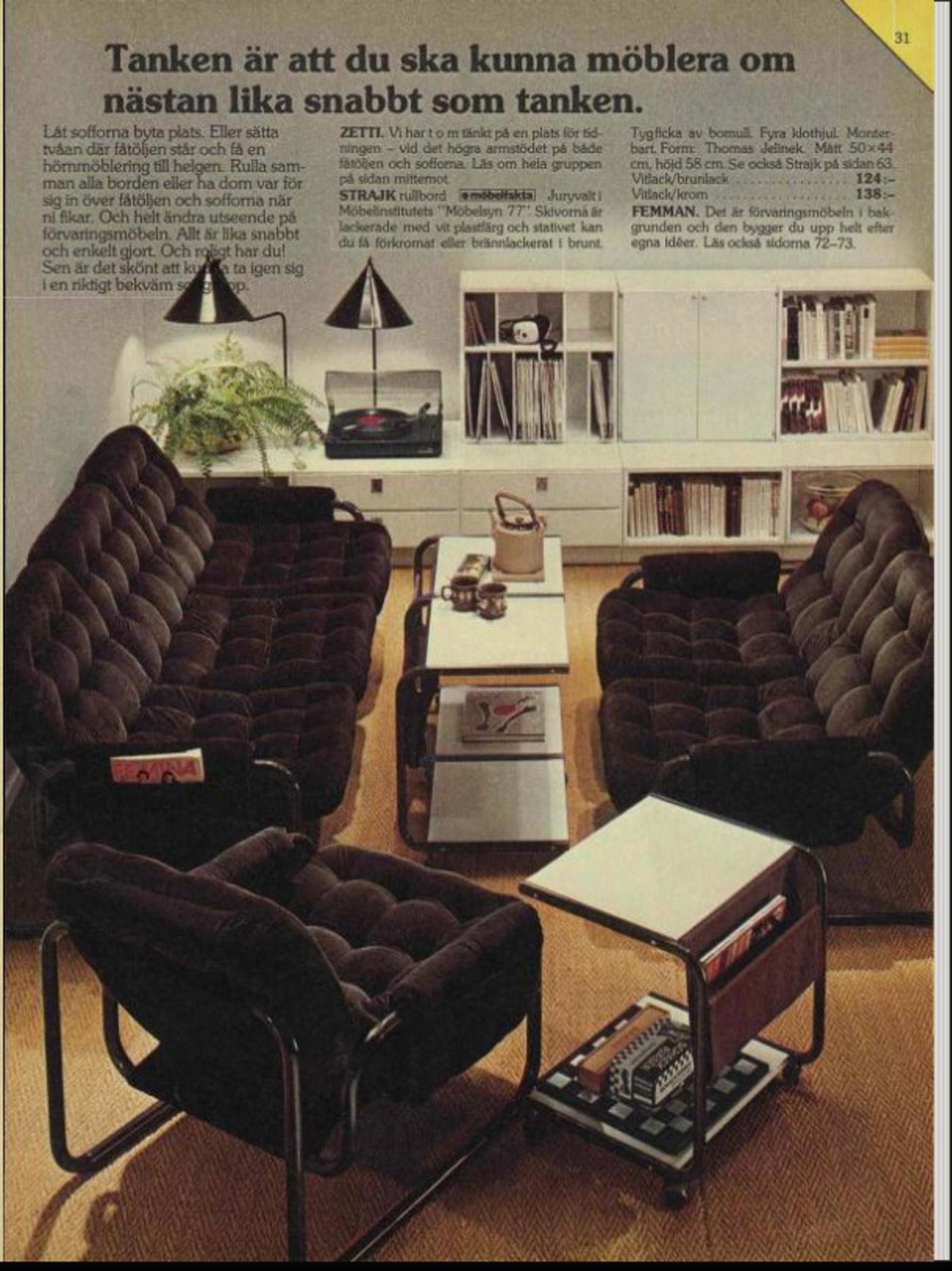History of Möbelfakta
Möbelfakta is not a new concept – the certification has evolved over more than 70 years. It is rooted in Swedish engineering, consumer information, and the furniture industry’s ambition to combine quality, function, and responsibility.
1951: The foundation in VDN – Product declaration for the benefit of consumers
The story begins in 1951, when the Swedish Product Declaration Board (Varudeklarationsnämnden, VDN) was established as a non-profit association with support from the state and industry. VDN worked to provide consumers with comparative product information based on standardized testing methods. The VDN label was found on everything from textiles to furniture – and laid the foundation for the Swedish tradition of open and factual product declarations.


1972: Möbelfakta takes shape
In 1972, Möbelfakta was launched as a reference and labelling system for furniture, developed by the then Furniture Institute (Möbelinstitutet). The system was based on standardized testing and documentation of furniture’s technical properties: strength, surface durability, material quality, functional dimensions, and safety
The first version of Möbelfakta included:
- Requirements specification and declaration guidelines (basis for testing)
- Test report (documentation of product properties)
- Möbelfakta declaration (classification of usability, durability, and craftsmanship in three levels)
- Reference mark (indicating that the product was tested and approved)
The Småland-based company Gemla was the first to join – followed by 52 companies already in 1973, including IKEA. During the 1970s, both KF and IKEA began incorporating Möbelfakta into their own requirements and built test laboratories based on the system’s methods. Möbelfakta became an important tool to demonstrate that even low-cost furniture could maintain a high and well-documented quality standard.
Soon, the system included more than 300 companies, with assignments from both the private and public sectors. For example, the Swedish Defence Materiel Administration (FMV) required Möbelfakta certification in its procurements, which further boosted adoption. At its peak in the 1980s, more than 1,400 tests were conducted annually. Many assignments were preceded by assortment reviews and technical consultancy.
From technical requirements to a holistic approach
In the 2000s, Möbelfakta took a major step forward. The certification evolved into a comprehensive system that, in addition to quality, also included environmental requirements and social responsibility throughout the supply chain. Today, the system covers three clear requirement areas that follow the furniture throughout its entire life cycle – from material selection to production, use, and reuse.
An industry-related – but independent – system
Möbelfakta is jointly owned by IVL Swedish Environmental Research Institute and TMF – The Swedish Federation of Wood and Furniture Industry, with IVL as the majority owner. This ensures independent and scientifically grounded development, while the certification continues to be shaped in close dialogue with the needs of the industry.

